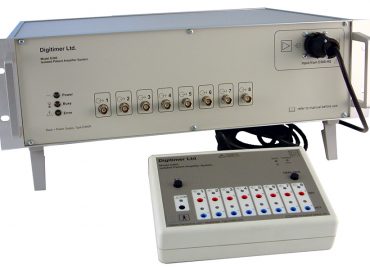Investigations of Postural Stability in Multiple Sclerosis Patients
Using the DS8R Stimulator for Transcutaneous Spinal Cord Stimulation

Introduction
In a new research article published in the journal Multiple Sclerosis and Related Disorders, Brad Roberts and colleagues from the University of Alberta, the University of St. Augustine for Health Sciences and Houston Methodist Research Institute examined whether transcutaneous spinal cord stimulation (TSS) had any effect on the postural stability of patients suffering from Multiple Sclerosis (MS). Using our DS8R stimulator to deliver safe, high-voltage, constant current stimulation, results from this small patient study suggest that TSS may provide a useful non-invasive method to investigate and develop clinical strategies targeted at improving the quality of life of those suffering from MS.
What is Multiple Sclerosis?
Multiple Sclerosis is the most common progressive neurological disease diagnosed in young adults and leads to widespread demyelination of neurons within the central nervous system. This demyelination results in a reduction in conduction velocity of neural impulses, causing enhanced latency between stimulus and response. An effective proprioceptive system relies on rapid stimulus-response reactions and approximately 50% of MS patients exhibit significant postural instability when standing, which can have a serious negative impact on their quality of life. Therefore, the development of clinical strategies to improve postural stability in MS patients is seen as a priority.
Transcutaneous Spinal Cord Stimulation as a Non-invasive Alternative to Epidural Stimulation
Previous studies of electrical spinal cord stimulation via epidural electrodes (ESS), have indicated that ESS can enhance sensorimotor function in individuals with chronic MS, but as this is an invasive surgical procedure, its use can lead to a relapse or exacerbation of symptoms. On the other hand, non-invasive TSS has been shown to affect spinal cord excitability in spinal cord injury patients, so the authors postulated that TSS might improve postural stability in MS patients.
Experimental Methods
TSS was delivered using our DS8R Biphasic Constant Current Stimulator, which provides an isolated and truly biphasic stimulus of up to 1A. Stimulation was administered using Axelgaard PALS conductive self-adhesive electrodes. One 5cm cathode was placed on the skin at the spinal midline between the spinous processes of the first (L1) and second (L2) lumbar vertebrae. Two anodes (5 cm × 10 cm) were placed, symmetrically with respect to the sagittal plane, on the skin over the abdomen. Stimulation during standing was delivered at 30 Hz, using the maximum tolerable intensity, which was as high as 50mA. Postural stability was assessed using a force plate, in parallel with EMG measurements from ankle muscles.
Conclusions
The authors found that postural stability was significantly enhanced by TSS when the subject had their eyes closed, but TSS had no effect if their eyes were open. This suggested an improvement in proprioceptive mechanisms related to postural control and the authors speculate that spinal modulation brought about by TSS may provide a future treatment strategy, possibly even for home use.
For more details, the full article can be accessed here:-
Roberts, B. W. R., Atkinson, D. A., Manson, G. A., Markley, R., Kaldis, T., Britz, G. W., … Sayenko, D. G. (2021). Transcutaneous Spinal Cord Stimulation Improves Postural Stability in Individuals with Multiple Sclerosis. Multiple Sclerosis and Related Disorders, 103009. https://doi.org/10.1016/j.msard.2021.103009



